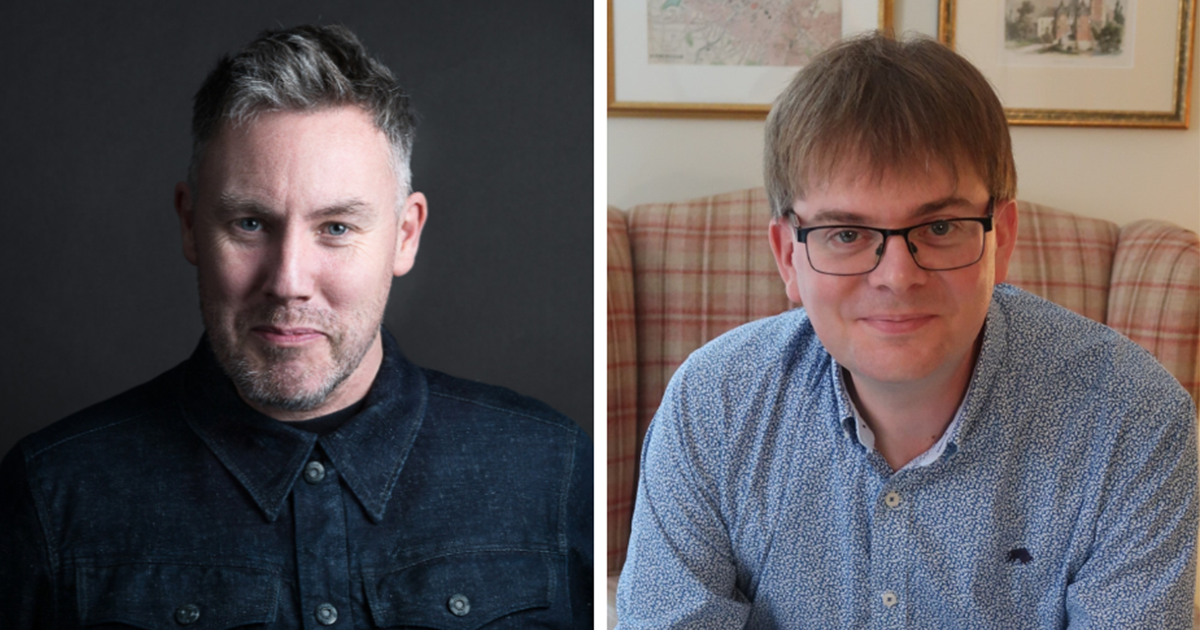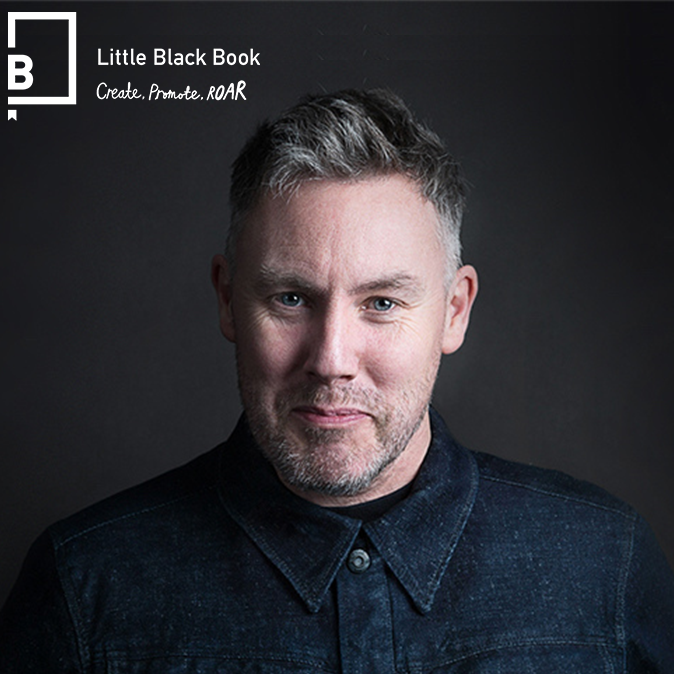- Reportage
Originally published on Little Black Book
Southpaw’s Glenn Smith and System1 Group’s Orlando Wood discuss why many emergent brands are stuck in a vicious cycle and how to gain long-term growth in a high-speed world

Back in November 2022, LBB spoke with Glenn Smith, creative director at Southpaw, on why so many challenger brands get seduced by short-term tactics and why they need to think differently to achieve long-term growth.
The article dives into the ‘trap’ that many emerging brands fall into – using quick, formulaic approaches to advertising that, whilst effective at getting your brand ‘out there’, don’t work so well at helping your brand be remembered or have lasting impact.
“All successful brands have long-term growth, and that comes from brand salience,” says Glenn. “Brand salience typically requires mass or broad beam media, and a certain scale of strategy and creative thinking. It takes effort, time, study and insight mining.”
The trouble is, he tells LBB, that broad beam or mass media agencies are usually quite large, expensive and slow – something that doesn’t quite align with the high-speed world that we live in today.
“Emergent and challenger brands can’t afford to spend several months strategising and because they rely on data and measurement to keep the stakeholders happy, they look to digital social content or more narrow beam agencies to get the brand noticed – and that’s the trap,” Glenn warns. “It’s only a short-term hit and then you’re back to square one. So you’re kind of in a vicious circle.”
So why are so many challenger brands falling into this trap?
Industry thought leader and author of ‘Lemon’ and ‘Look Out’, Orlando Wood, says that “advertising has changed quite a lot in the last 15-20 years. We’re often looking at the product right in front of our faces, and it’s become rather mechanistic. We see lots of short, sharp cuts, words on the screen, telling us what to think and do.”
“I think this has come from the ability to target people very narrowly, so advertising now tends to assume that the audience at the other end is inherently interested in the brand in question. And that all it has to do is nudge this receptive audience towards a purchase,” he explains. “That’s very difficult and that’s different from the sort of advertising that builds brands”
“The kind of advertising that is likely to work long-term is the kind that doesn’t assume an inherent interest in the brand, but seeks to create interest in the brand, “ Orlando stresses. “This can often be achieved through narrative, character, and leaving the audience to fill in the gaps. Howard Gossage once said, when you’re baiting the mousetrap with cheese, make sure you leave room for the mouse. In advertising, I translate that to: you’ve got to leave something for the audience to do. They have to make some connections, they have to understand the context you’re presenting to them, and they have to fill in the gaps themselves.”
“Modern day advertising, on the other hand, is what we might call performance advertising – it’s very direct. It’s telling you what you need to know and pushing the product, rather than trying to reveal the virtues of the product through story or narrative. This method is very ineffective at lodging into your memory. It bounces off.”
How to Create Lasting Effects in a High-Speed World
According to Southpaw’s Glenn Smith, there are three key ways to achieve long-term impact in a high-speed world.
#1 Create a Foundational Idea
The more solid a foundation is, the higher you can build and the longer your construction will last. “This is true in marketing as it is in architecture,” Glenn notes. “Take the Empire State Building – the most ambitious building project the world had ever seen required the biggest foundation ever laid – 4.5 million cubic feet of steel and concrete. None of this, of course, is visible. But thanks to all that hard work, planning and a clear vision, the Empire State Building is not only the first building you see on the NYC skyline, it’s also the one you remember the most!”
In a ‘high speed’ world, brand planning is often viewed as excessive and slow, and this in part is what has led many to the ‘mechanistic’ advertising we see today. “This is something that I discussed with effectiveness experts Peter Field,” Orlando shares. “Peter observed the breakdown in the relationship between how much advertisers spend and the ability of the advertising to create market share gain. He noticed a switch of budgets from brand building advertising to activation or performance advertising. Performance advertising is pretty disposable in the long-term.”
“You’ve got to work quite hard to make advertising interesting to people if they’re not immediately in the market for it. And that requires craft, skill and experience in doing the kind of advertising that we used to be more familiar with.”
Glenn concludes: “If you get the right strategic and creative brains working together, a rock-solid foundational idea can be forged at pace and still stand the test of time. Use this architectural truth to build your brand and you could also create something iconic.”
#2 Build a Brand Eco-System
With a foundational idea in place, it’s time to grow. But, unlike the skyscrapers of NYC, Glenn suggests that your brand should be more like a forest – organic, instinctive, symbiotic.
“The 360 campaign model isn’t fit for purpose in a high-speed world. Your hero asset, cut down for social, and key visuals turned into a set of matching luggage for all other touchpoints will soon run out of energy.”
“Often advertising is designed to work everywhere,” Orlando agrees, “That’s what technology has enabled us to do. But the danger is that your ‘global ad’ may not work in any one of those places particularly well. Chopping it apart and fitting it to different platforms does not lend itself to engaging narrative.”
Instead of cutting down hero assets, Glenn advises that marketers should “allow each format to grow from a foundational idea. This way your TV ad and your TikTok campaign will thrive in their own, unique environments but be uniquely connected by one, cohesive brand DNA. An ecosystem is self-serving and left to its own devices will flourish. So, think of your media laydown and consumer touch points as individual entities linked by a common purpose.”
#3 Focus On Emotion
“To make someone do something you have to make them feel something,” Glenn points out. “Brands grow by creating a deeper emotional connection with their audience. But that doesn’t have to mean writing the world’s funniest joke or a tear-jerking script.”
“Neuroscience tells us that emotional behaviour is highly varied and can be triggered in many ways. For example, the emotions that generate feeling for a sports brand are very different to an insurance brand. A little bit of extra mining into your target audience’s emotional motivations can reveal behaviours and nuances that can be influenced by brand storytelling.”
He continues: “Simple behavioural science models like information chunking, empathy-bias and hot state decision making can work like emotional steroids, creating powerful memory structures that put your brand top of mind without having to spend on heavy, broad reach media plans.”
“The kind of advertising that elicits the emotional responses needed for long-term brand building, does not tell me something, it makes me feel something. It’s that simple,” Orlando adds. “The left hemisphere – which is for narrow beam attention – tends to become more dominant in times of technological change because we’re trying to get to grips with new tools. This has led to the right hemisphere receding. But the right hemisphere is crucial in helping us understand narrative, context and emotion. And I think that’s what explains, at least in part, some of the problems we see around us in culture and society today. That’s why we’re seeing advertising that only works in that very narrow, limited way which sells advertising short because to create these wonderful, lasting effects you need characters and narratives.”
“Think of advertising as putting on a show,” he summarises. “Whether it’s a sketch, a routine, a piece of music, include character incidents in a defined place with suspense – that’s what keeps us wanting to watch. All the things that entertain.”
By following these three key guidelines, your emergent brand should be in a good position to cut through in a fast moving world and leave lasting impact that leads to long-term brand growth and success.
End article
Read article at:
https://www.lbbonline.com/news/the-challenger-brand-trap













